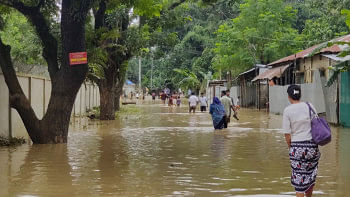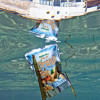Mountain tourism: Balancing beauty and ecology

Himachal and Uttarakhand stand as the most enchanting states in India. The majestic mountains, flowing rivers, breathtaking snowfall, and serene spiritual sites annually attract millions of tourists. However, this year, nature turned against the people and transformed the allure into devastation. These two states witnessed catastrophic floods, which claimed hundreds of lives and inflicted economic losses exceeding 10,000 crore Indian rupees only in Himachal Pradesh. The floods were not solely the result of natural forces; man-made factors played a significant role.
In 2022, over 15 million visitors flocked to Himachal Pradesh, a number exceeding twice the state's population. The relentless growth in tourism has led to the construction of new hotels, motels, and restaurants in the hills. The surge of vehicles on roads is also undeniable. Highways are being expanded without sufficient consideration of geological and mountain engineering challenges. This rush for tourism-driven mass development is wreaking havoc on the mountain ecosystems, depleting natural resources, including forests and rivers.
What's alarming is that tourists expect urban luxuries in the hills. And accordingly, multi-millionaire investors pour money into extravagant hotels and swimming pools while depleting the natural water sources of local communities.
The flood experience in Himachal and Uttarakhand serves as a costly lesson, one that demands a significant shift in how we perceive and engage with these pristine landscapes. The devastation unequivocally demonstrates that the mountains are not suitable for unbridled consumerism and infrastructure expansion. Instead, mountain tourism must embrace an eco-friendly and community-centric approach. This is not just a lesson for India; it's a lesson for Nepal and Bangladesh as well. Both of these countries are witnessing a surge in infrastructure development and mass tourism in their mountainous regions.
Mountain tourism is gaining popularity in Bangladesh, exemplified by the growing number of visitors to Sajek and other hilly areas, which are now unfortunately full of plastic waste. Even Bandarban, once a place shrouded in mystery, is now a hub for tourists, who are behind the rise in plastic pollution. The river ecosystems in the Chittagong Hill Tracts, particularly the Sangu River, bear the brunt of this deluge of plastic deluge.
What's alarming is that tourists expect urban luxuries in the hills. And accordingly, multi-millionaire investors pour money into extravagant hotels and swimming pools while depleting the natural water sources of local communities. Construction is booming in Bandarban and other hilly districts without a comprehensive master plan. From Sajek to Bandarban, new restaurants, hotels, and motels are cropping up without proper geological and mountain engineering awareness.
This reckless construction disregards the delicate mountain terrain, akin to what we've seen in Himachal and Uttarakhand, where buildings have been erected on steep slopes, causing landslides. This year, Bandarban experienced unprecedented flooding, landslides, road collapses, and waterlogging. The combination of mass tourism and an unsustainable sense of consumption in Bangladesh's mountain areas is steering us towards a potential disaster like that of Himachal. If we fail to address the challenges of mountain engineering or explore alternative approaches to host tourism, worse days are coming.
Instead of high-rise buildings and urban infrastructure, eco-tourism should be prioritised in hilly areas, taking environmental and topographical challenges of mountains into account. A comprehensive master plan and building code tailored to mountainous regions should be formed. Alongside single-use plastics and lack of waste management, high-intensity outdoor lights at night also adversely affects the wildlife. Therefore, barring single-use plastics and minimising light pollution should be prioritised.
A shining example of an alternative approach can be found in Kashmir, where there are no towering hotel structures catering to tourists. Instead, authorities have embraced community-based tourism. In this model, local residents are authorised to host tourists in their traditional homes, providing affordable food and offering guidance on exploring the area.
The advantages of this approach are multifaceted. Firstly, it addresses the issue of tourists inadvertently impacting the mountain's ecology due to their lack of understanding. Through community-based tourism, visitors receive an introduction to the local environment and ecology on their first day by the host, enabling them to engage in eco-friendly tourism practices throughout their stay.
Secondly, lavish hotels are not required to host tourists; they could be hosted in the traditional homes of locals, as per the Kashmir model. These homes have proven their sustainability over centuries and ensure minimal environmental impact. Community tourism may also immerse tourists in indigenous culture and civilisation. Furthermore, community-based tourism can have a positive economic impact on the local community, as opposed to benefiting commercial enterprises.
Hills are crucial for environmental preservation, which includes maintaining the ecological balance and conversing wildlife. Any disregard for environmental assessments can trigger natural disasters with far-reaching consequences. Regrettably, we seem to be slowly treading down this perilous path. But it doesn't have to be this way. In the expanse of the hills, eco-tourism and community-based tourism will ensure the delicate balance between nature and human activity. These initiatives hold the promise of safeguarding our hilly areas while promoting economic growth for local communities.
Shahadat Hossain is a research scholar at the Department of International Relations of South Asian University in New Delhi.
Views expressed in this article are the author's own.
Follow The Daily Star Opinion on Facebook for the latest opinions, commentaries and analyses by experts and professionals. To contribute your article or letter to The Daily Star Opinion, see our guidelines for submission.

 For all latest news, follow The Daily Star's Google News channel.
For all latest news, follow The Daily Star's Google News channel. 











Comments